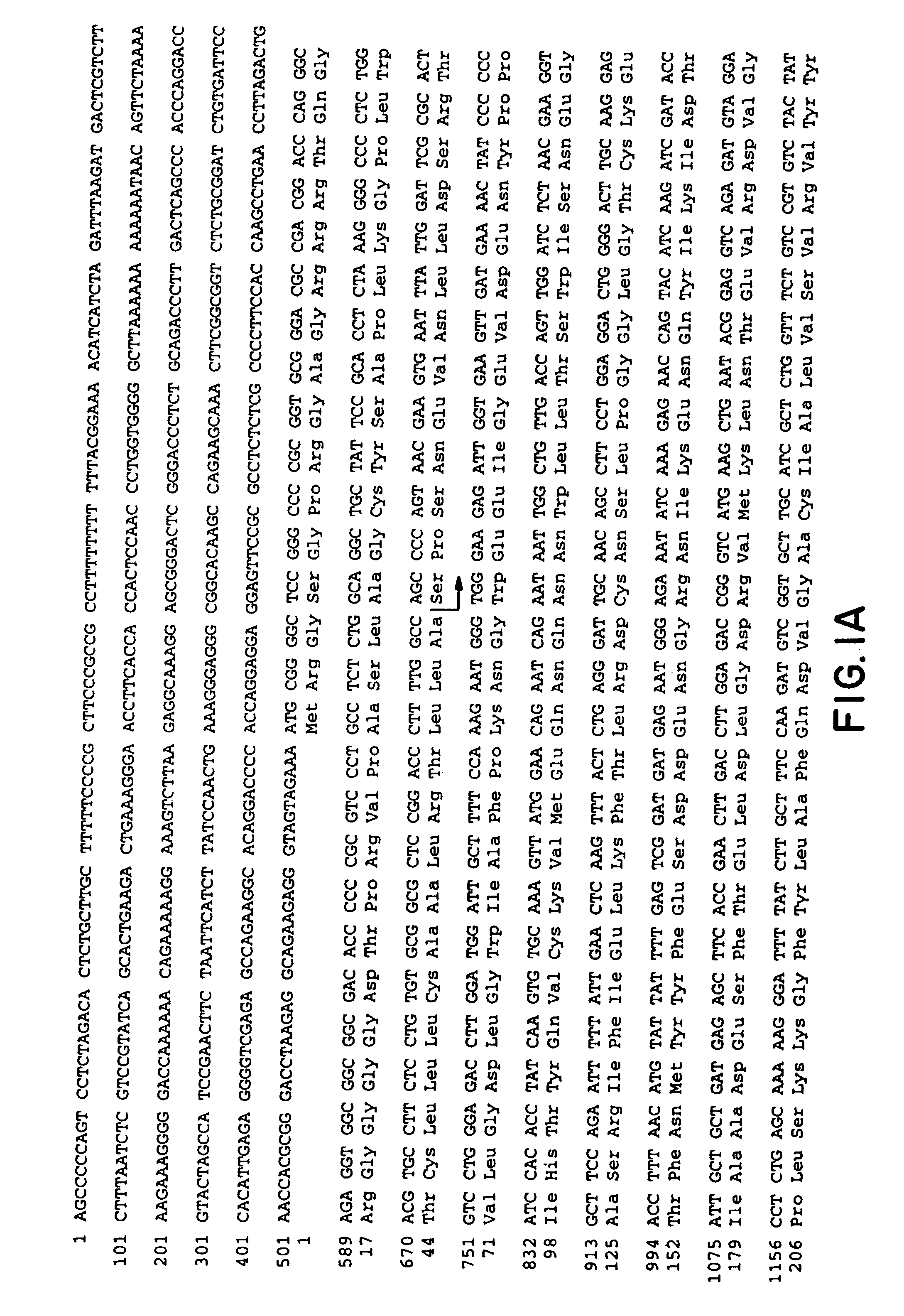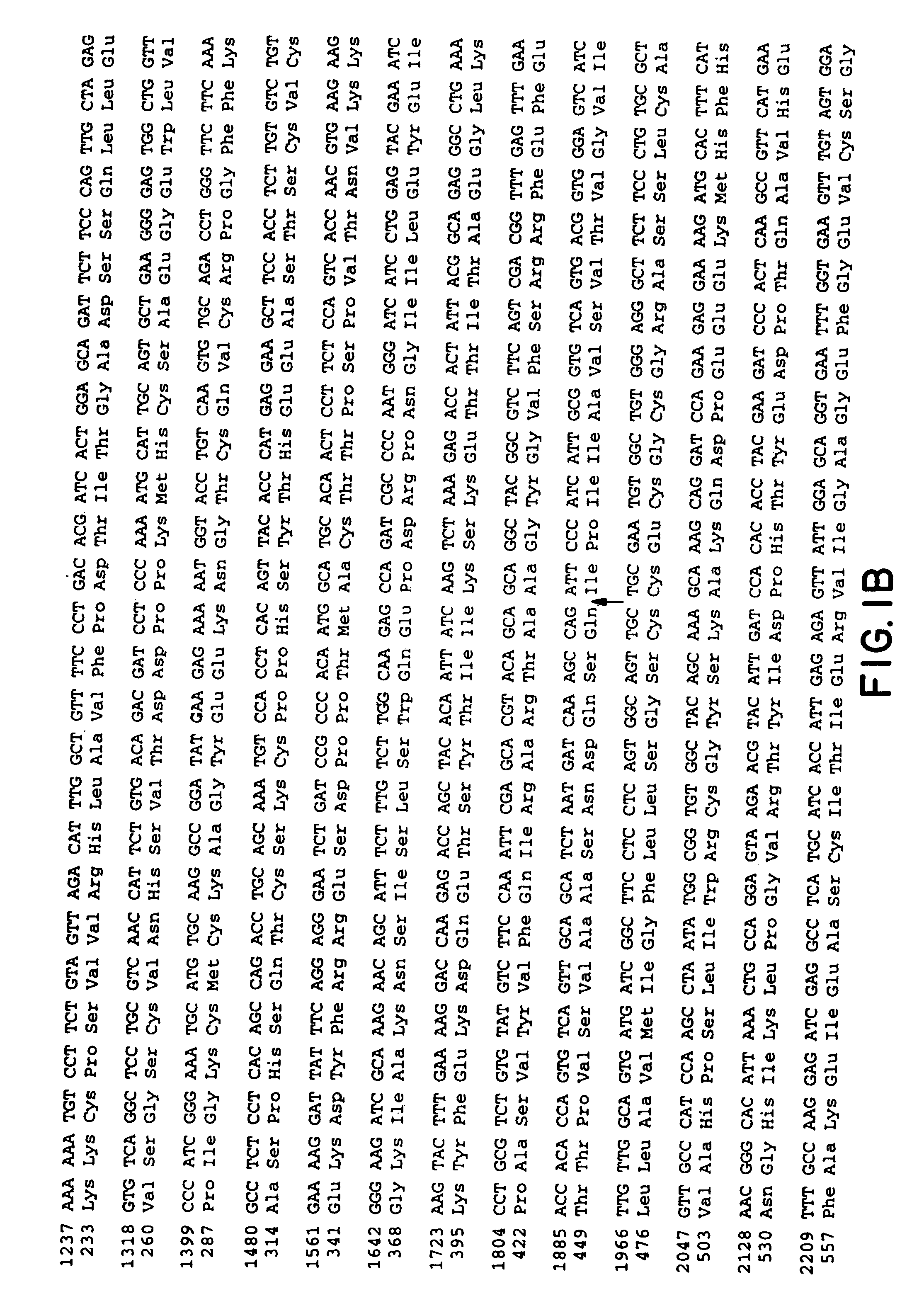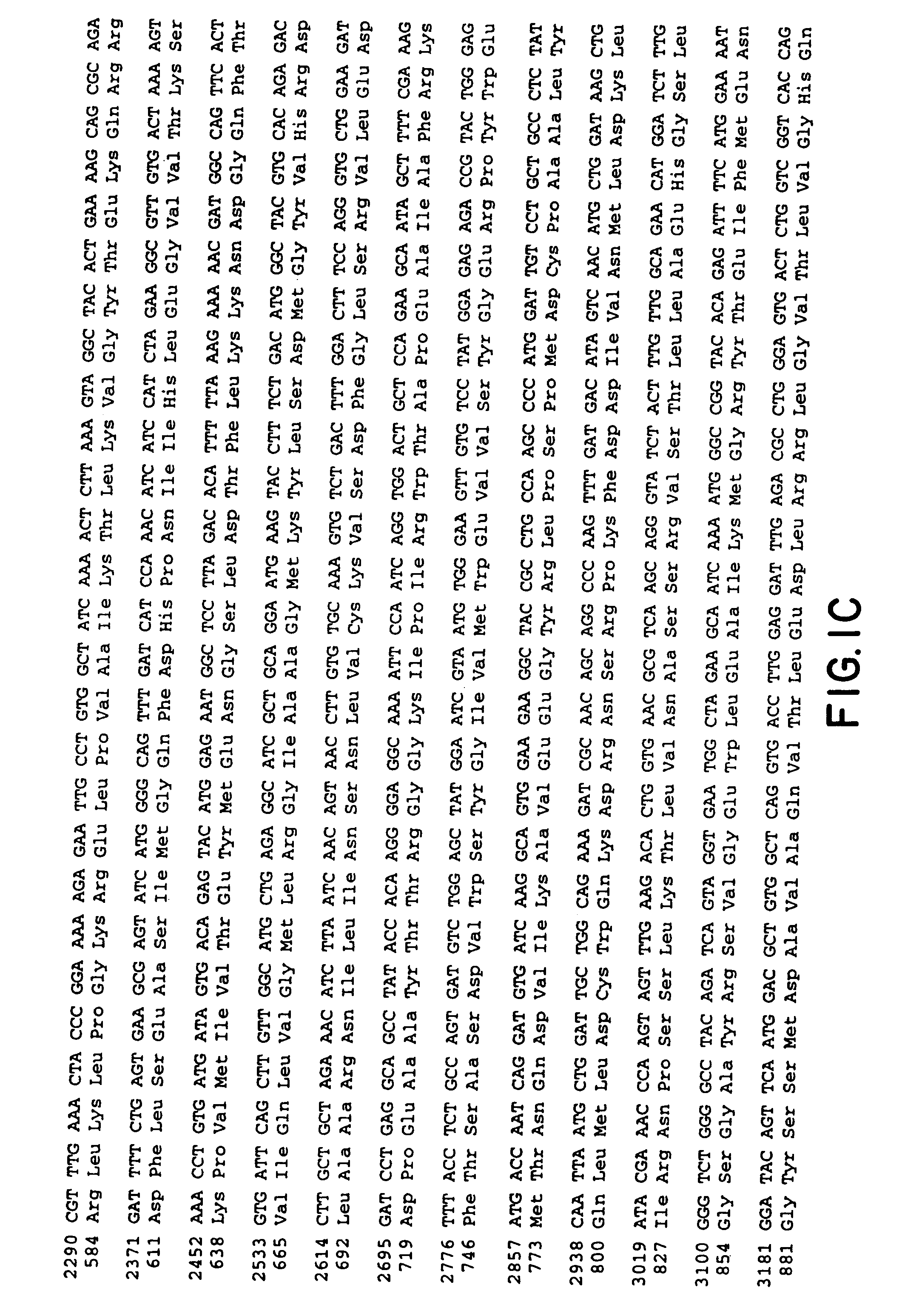AL-1 neurotrophic factor treatments
- Summary
- Abstract
- Description
- Claims
- Application Information
AI Technical Summary
Benefits of technology
Problems solved by technology
Method used
Image
Examples
example 1
Identification and Isolation of REK7 cDNA
[0141]To isolate novel growth factors that might act on central nervous system neurons, a search for new tyrosine kinase receptors was made using a polymerase chain reaction (PCR). Degenerate sense and antisense primers were prepared that corresponded to conserved amino acid sequences within the kinase domain of many receptor tyrosine kinases. The nucleotide sequences of the primers were as follows:
[0142]
(SEQ. ID. NO. 5)5′ - CCCTCGAGGTCGACCAYMGIGAYYTIGCIRCIMGIAA - 3′(SEQ. ID. NO. 6)5′ - CCCTCGAGGTCGACCAYMGIGAYYTIGCITGYMGIAA - 3′(SEQ. ID. NO. 7)5′ - CCGCGGTGCGGCCGCCRWAISHCCAIACRTC - 3′
[0143]These degenerate primers were used to amplify the cDNAs of an adult mouse hippocampal cDNA library using standard PCR methods, and the resulting amplified cDNAs were subcloned and sequenced. One of these cDNAs, approximately 200 bp in size, encoded a deduced amino acid sequence within the kinase domains of the eph family of receptor tyrosine kinases. This 2...
example 2
Construction of REK7 Expression Plasmid
[0145]A cDNA encoding REK7 was cloned into the mammalian expression vector pRK7 (PCT Publication No. WO 90 / 02798, published Sep. 22, 1990), between the XbaI and BamHI restriction endonuclease cleavage sites of pRK7, to produce the expression plasmid pRK-REK7.
example 3
Production of REK7-IgG Fusion Protein
[0146]DNA encoding a soluble REK7-IgG chimera was constructed by joining DNAs encoding the extracellular domain of REK7 and the Fc domain of the IgG1 heavy chain. The DNA sequence encoding the IgG1 portion of the REK7-IgG chimera was obtained from the CD4-IgG expression plasmid pRKCD42Fcl (Capon, et al., Nature 337:525 (1989); Byrn, et al., Nature 344:667 (1990)). That plasmid encodes a hybrid polypeptide consisting of residues 1–180 of the mature human CD4 protein (two N-terminal CD4 variable domains) fused to the portion of the human immunoglobulin IgG1 protein extending from the aspartic acid residue at position 216 (which is the first residue of the IgG1 hinge after the cysteine residue involved in heavy-light chain bonding) to amino acid residue 441 (the numbering of residues in IgG1 is based on amino acid residue 114 being the first residue of the heavy chain constant region (Kabat, et al., Sequences of Proteins of Immunological Interest, 4...
PUM
 Login to View More
Login to View More Abstract
Description
Claims
Application Information
 Login to View More
Login to View More - R&D
- Intellectual Property
- Life Sciences
- Materials
- Tech Scout
- Unparalleled Data Quality
- Higher Quality Content
- 60% Fewer Hallucinations
Browse by: Latest US Patents, China's latest patents, Technical Efficacy Thesaurus, Application Domain, Technology Topic, Popular Technical Reports.
© 2025 PatSnap. All rights reserved.Legal|Privacy policy|Modern Slavery Act Transparency Statement|Sitemap|About US| Contact US: help@patsnap.com



